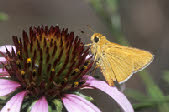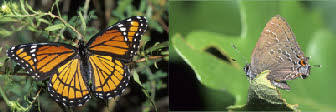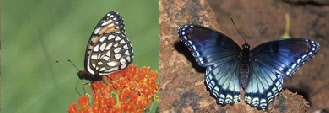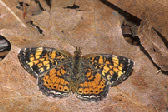The Butterflies of the World Foundation
A Non-





Cupido comyntas, Lexington Wildlife Management Area, Cleveland County, Oklahoma,
26 September 2005 Ref
#: I-

Cupido comyntas, two individuals with one Reakirt’s Blue, Echinargus isola, on horse
manure, Lexington Wildlife Management Area, Cleveland County, Oklahoma, 23 September
2005 Ref
#: I-

Cupido comyntas, Little Yellowstone Park, Barnes County, North Dakota, 29 August 2003
Ref
#: I-

Cupido comyntas, Little Yellowstone Park, Barnes County, North Dakota, 29 August 2003
Ref
#: I-

Cupido comyntas, mated pair, Mirror Pool Wildlife Management Area, Ransom County,
North Dakota, 30 August 2003 Ref
#: I-

Cupido comyntas, Lexington Wildlife Management Area, Cleveland County, Oklahoma,
29 September 2005 Ref
#: I-

Cupido comyntas, demonstrating “mud puddling” behavior, J. T. Nickel Family Nature
and Wildlife Preserve, Cherokee County, Oklahoma, 2 April 2007 Ref
#: I-

Cupido comyntas, Mirror Pool Wildlife Management Area, Ransom County, North Dakota,
30 August 2003 Ref
#: I-
Eastern Tailed-
Cupido comyntas, Godart, 1824
Subfamily Polyommatinae
Taxonomy
The family Lycaenidae is a large and varied worldwide group that has 4,000 to 6,000
species depending on the ever-
All photographs, artwork, text and website design are the property of The Butterflies of the World Foundation (unless otherwise stated) and are protected under national and international copyright laws. Photographs, artwork or text on this website may not be reproduced in any way without prior written consent of The Butterflies of the World Foundation.
General Information:
Cupido comyntas belongs to the subfamily Polyommatinae. This butterfly’s range is throughout the eastern half of the U.S. and southeast Canada as well as parts of California then south to Costa Rica.Costa Rica. This species can be found in most any sunny area from fields, edges of woods, vacant lots, gardens, roadsides and along lakes, rivers and ponds.
Lifecycle:
The larval food sources are many and include plants in the pea family including yellow sweet clover (Melilotus officinalis), alfalfa (Medicago sativa) as well as various species of vetch (Vicia sp.), clover (Trifolium sp.), wild pea (Lathyrus sp.) and bush clover (Lespedeza sp.). Males patrol near the host plants during daylight hours. Females lay eggs on flower buds and caterpillars eat buds, flowers and seeds. The caterpillar hibernates, pupating the following spring.

Cupido comyntas, Lexington Wildlife Management Area, Cleveland County, Oklahoma,
2 June 2012 Ref
#: I-